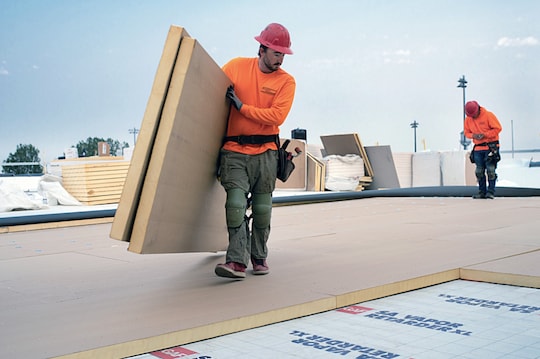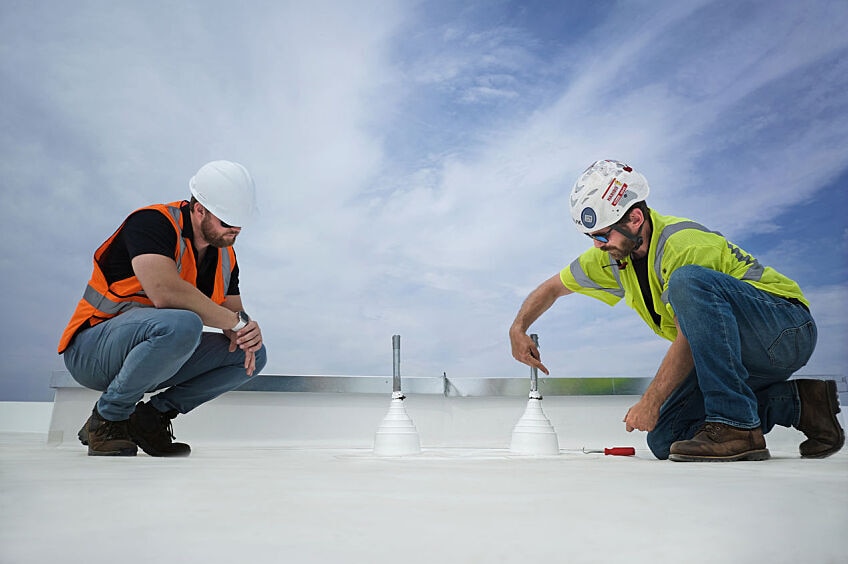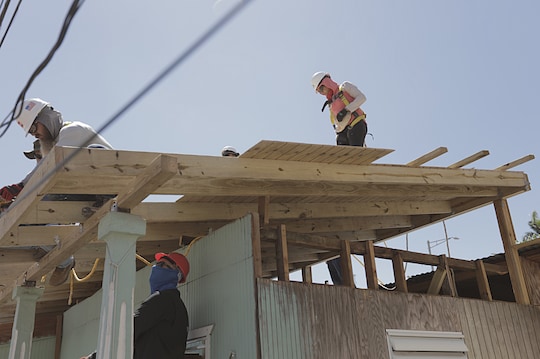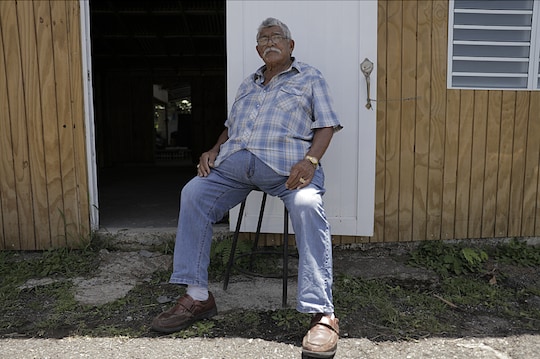
Si tu edificio comercial necesita un techo nuevo o una reparación, podría ser el momento de llamar a un techador profesional. Es posible que haya algunos contratistas en tu área, por lo que saber qué preguntas hacerle a un techador te será de utilidad para encontrar el adecuado para el trabajo. Además de solicitar muestras de sus trabajos anteriores, aquí hay ocho preguntas para que le hagas al contratista de techado antes de contratarlo.
1. Are You Licensed and Insured?
Not all states require licensing but many do, and you'll want to see proof that the contractor is licensed in the state they'll be performing work for you.
In many cases, roofing contractors who advertise their services are required to include their license number in the advertisement. Most states that require licensing have online portals where you can verify that the contractor's license is in good standing.
Insurance is also important, as sometimes not all jobs go smoothly. The contractor should be covered in case an unfortunate incident occurs.
2. Does Your Company Hold Manufacturer Certifications?
Roofing manufacturers may offer several certification levels, helping you know what level of service and experience to expect. Por ejemplo, los contratistas Master Select de GAF deben completar una capacitación continua y tener la licencia y el seguro adecuados. Additionally, they must have at least $1 million in general liability insurance coverage and a satisfactory Better Business Bureau rating, among other requirements.
Not every contractor can achieve certification. De hecho, solo el 1% de los contratistas de techado en EE. UU. alcanzan el nivel Master Select de GAF. This status means the contractor has been vetted by the manufacturer, meets strict requirements for quality control and can potentially offer enhanced warranties on roofing systems.
3. Are Your Workers Certified?
Many training programs and certifications are available for roofing installers, such as the National Roofing Contractors Association ProCertification® training program and the GAF CARE Contractor Training Center.
You want to be sure the people working on your roof understand the proper repair and installation methods for your roofing system. Seeing what certifications they hold can confirm their roofing knowledge and familiarity with the products you're looking to install.
4. Is Your Company a Member of Any Industry Associations?
Membership in an industry association can demonstrate a roofing contractor's professionalism and commitment to their industry. In addition to regional, state, or national roofing associations, some commercial roofing contractors belong to associations designed for building owners and facility managers, such as the Building Owners and Managers Association or the International Facility Managers Association.
If you're a member of either of these organizations, your membership list could be a good place to start your search for a commercial roofer.
5. What Is Your Project Timeline and Process?
The contractor should consider all aspects of your project when planning it. Asegúrate de que sepa instalar sistemas y soluciones para techos de calidad y comparte cualquier inquietud que puedas tener antes de comenzar el trabajo. Por ejemplo, es posible que te preocupe cómo la construcción puede afectar a los ocupantes del edificio, incluidos los niveles de ruido y el estacionamiento. Your contractor should be able to review a plan with you that addresses these concerns.
They should also give you a project timeline from start to completion and be able to explain their process, which can include:
- Initial site inspection
- Repair or replacement recommendations
- Estimate development
- Project timeline
- Plans to minimize disruptions
- How they'll handle and communicate unexpected issues
- Opciones de garantía
6. How Do I Prepare for the Roofing Project?
Determine if you need to take any steps to prepare for the project. Por ejemplo, el contratista debería sugerir cómo informar a los ocupantes del edificio sobre el próximo trabajo y su duración. Also, if you have neighbors close by or share parking lots, they'll need to be notified too.
Every project and building is different, so other preparations may need to happen before the project begins. El contratista puede identificar cualquier necesidad adicional como parte de su proceso de inspección y planificación. In most cases, the contractor will handle precautions-like roping off parking areas or protecting landscaping-and they should communicate that to you before your project begins.
7. How Much Will the Project Cost? Are There Contingencies?
Most commercial roofing contractors include the project cost in their bid package, but you should also ask about contingencies. Una contingencia suele ser un pequeño porcentaje del costo total del proyecto que puede incluirse para cubrir imprevistos que puedan surgir durante un proyecto de techado, como moho o podredumbre. Hacer reparaciones inesperadas aumentará el costo del proyecto. So, understand whether a contingency is included in your estimate so you can financially prepare.
8. Do You Have a Maintenance Program for Repair Work?
Once your roof has been installed, it's important to take care of it. Pregúntale al contratista si ofrece un programa de mantenimiento que incluya una inspección anual de tu techo. Esta es una excelente manera de evaluar el estado del techo después de un año de exposición a las inclemencias del tiempo. Any issues can be addressed before they turn into larger problems.
By having a maintenance program in place, you can build a lasting relationship with your commercial roofing contractor and may even be able to extend your roof's warranty. If your contractor participates as a GAF Certified Maintenance Professional® you could be eligible for a 25% warranty extension with the completion of required inspections and proper documentation.
Signing with a Commercial Roofing Contractor
Knowing what to look for when hiring a roofer is the first step toward a successful project. Ahora que conoces algunas de las preguntas que debes hacerle a un techador, entrevistarlo debería ser más sencillo. Sus respuestas pueden ayudarte a decidir si es la persona adecuada para tu proyecto. Keep in mind that it's wise to meet with and interview multiple commercial roofing contractors before signing a contract.
Ready to take the next step? Find roofing contractors certified by GAF* in your area and schedule a time to talk about the commercial work you need completed.
*Los contratistas inscritos en los programas de certificación de GAF no son empleados ni agentes de GAF, y GAF no controla ni supervisa de otro modo estas empresas independientes. Los contratistas pueden recibir beneficios, como puntos y descuentos de recompensa por lealtad en herramientas de comercialización de GAF por participar en el programa y ofrecer a GAF garantías mejoradas, que requieren el uso de una cantidad mínima de productos de GAF. Your dealings with a Contractor, and any services they provide to you, are subject to the GAF Contractor Terms of Use.



